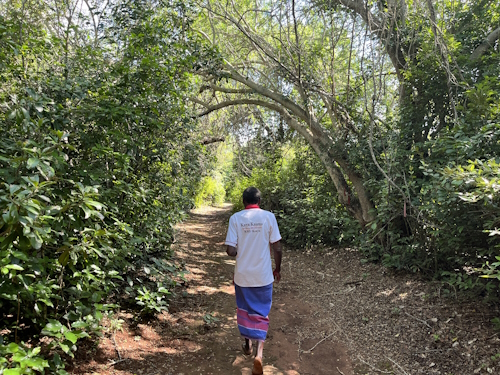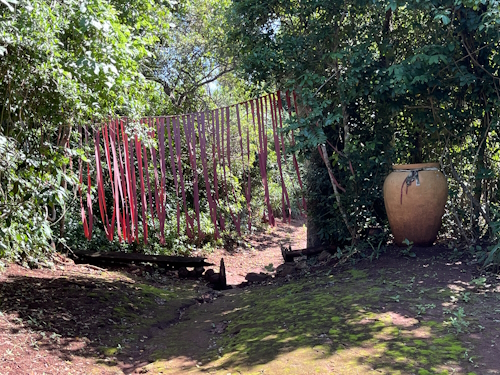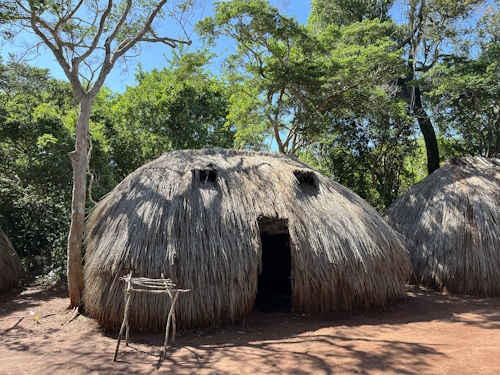Quick Access
1205 of 1223 WHS have been reviewed by our community.
Erbil Citadel
Clyde Malta - 13-May-25

I visited this Iraqi Kurdistan WHS in September 2024. Up till not long ago, visitors arriving in Iraqi Kurdistan could not visit the rest of Federal Iraq but in 2024 this is no longer the case, even though you certainly feel as if you're visiting a different country when visiting from Baghdad. The location of the Erbil citadel, built on top of a high multilayered tell, makes it really pleasant to gaze at its exterior details towards sunrise or sunset. In the morning, you'll see all types of vendors setting up their wares, while towards sunset the whole modern square with fountains gets very lively with traditional coffee sellers in full costume roaming around locals, expats and tourists who gather there.
Read OnOld Town Lunenburg
J_neveryes Canada - 18-May-25

I have visited this charming east coast Canadian town twice, i.e., in 2006 and in 2021. Although the town is compact, I stayed overnight on both trips to enjoy it at a more leisurely pace and to also use the town as a base to explore the picturesque the South Shore of Nova Scotia.
Lunenburg is touristy, but it still maintains an aura of authenticity and continues to capture Nova Scotian's famous down-to-earth personality. The existence of a non-tourism industry, such as the High Liner Foods plant, is helpful in this regard.
Read OnPalau de la Musica Catalana & Hospital de Sant Pau
2Flow2 United States - 17-May-25

Visited in May 2025. These two works by the Catalan architect Lluís Domènech i Montaner are both excellent locations to visit, and as other reviewers have said, are just as good as the Antoni Gaudí works.
[...]
Read OnWorks of Antoni Gaudí
2Flow2 United States - 17-May-25

Visited in May 2025. This site maintains a very high rating for a reason. The work is incredible.
One recommendation I hadn't seen on any of the reviews so far: read up on Antoni Gaudí and his non-traditional method of designing before visiting Barcelona! Learning of Gaudí's interesting life beforehand will enhance your experience and give you a perspective that the audio guide tours can help flesh out. (They will not give you the full story on their own.)
I think Kyle Magnuson said it best in his review here: "If all 8 Frank Lloyd Wright inscribed components were in one city, it might feel like this." Wandering around Barcelona, for as touristy as it is, is a treat as you search to discover all of the fascinating Gaudí buildings with their striking, non-traditional architecture style. Experiencing his work will make you lament how few buildings constructed in the modern day (especially in younger countries with few attractive historical edifices) have real personality and style, trading off beauty for price of construction & functionality instead
Read OnBlog WHS Visits
WHS #971: Kaya Forests
The Sacred Mijikenda Kaya Forests along the East Coast of Kenya comprise former fortified settlements (kayas) in an undisturbed forest setting, which still fulfill a sacred role in the belief of Mijikenda peoples. It's such a messy WHS: it is what you get after an AB overrule where the documents haven’t been adjusted to the final decision. When I started preparing for my June 2025 visit, I found out that we had its site history and name (it starts with “Sacred”) all wrong, a rare occurrence nowadays. Originally, it had 36 locations, now there are 8 according to the map section at the UNESCO website, but that’s an error also. Kaya Kinondo was explicitly excluded in the inscription decision. I have alerted the UNESCO WH Bureau to the mistake, but never got a reply and the error persists.
Instead of Kaya Kinondo, which is an easy-to-access site just outside the popular beach resort of Diani Beach, I had to find another Kaya suitable for a visit. All remaining Kayas lie north of Mombasa, so that city or one of the northern coastal towns, such as Watamu, are the best bases. Kaya Kauma stood out immediately as it welcomes visitors regularly as well. I went there on a private half-day tour from Mombasa with Diani Summer Tours.
Kaya Kauma is managed by the Council of Elders of the Kauma people, one of the nine groups that together are known as the Mijikenda. It lies about a 2-hour drive north of Mombasa. My driver started his introduction with “I have never been there, but I have the plan”. Fortunately, he was a persistent guy, because we had barely left the big city when he was called by his contact, the secretary of the Council of Elders. The secretary stated that although a visit was agreed upon beforehand, it wasn’t such a great day as today was a Muslim holiday ánd there had been a death in the village. The driver replied that he had a tourist with him and was coming anyway. Half an hour later, he got another phone call, with the message that the agreed-upon price wasn’t going to do it – the guy from Kauma now demanded 25,000 KSh (about 175 EUR). A ridiculous amount by Kenyan standards, which neither the tour company nor I wanted to pay, but the driver just kept on driving to our target. Later, he got a more reassuring call from another guy from the village near the Kaya (Jaribuni), who said that we could work things out.
The final 12km to the Kaya is on a horrible road that needs a high clearance vehicle and an experienced driver. There’s no signage anywhere, and I guided my driver using Google Maps navigation. In Jaribuni, the local contact hopped in our car and we drove on to the Forest. In the last km, we finally saw a ‘Kaya Kauma – the Sacred Mijikenda Forests’ road sign. We ended up at the edge of the forest where we could park and the Chairperson of the Kaya Kauma Conservation Committee was waiting for us. After a friendly welcome, the financial negotiations restarted. It turned out that the Kauma take a “Bhutanese” approach to tourism: "high-value, low-impact". My driver, who came from Diani Beach, argued that the Kayas in his region (known for mass tourism) are easy to access and against a low fee. The Kauma wanted 25,000 KSh for a visit to the sacred inner area of the Kaya, or 15,000 KSh for a visit to the forest only. I opted for the latter, and we managed to get the price down eventually to 8,000 KSh.
We then followed the Kauma official into the forest. Although all Kayas were made by different groups, they share similar characteristics. One of those is a traditional path, the mwara; usually, there are only two such paths leading to the Kaya. That path first led us past the tree nursery, as the Kauma ‘restock’ the natural forest with plants and trees that bear edible fruits. The forest itself is dense but not very tall. Parts of it are ‘fenced off’ by strips of red cloth. We ended up at the entrance to the sacred area (photo 2), and as agreed, we weren’t allowed to enter. People who may enter have to leave their shoes behind and make an offering in the large jar. The entrance has a whole row of strips of red cloth, plus remains of a stockade that in the past was used to keep strangers out.
Just in front of the entrance is also the (unmarked) burial place for the clan leaders – our guide said that his ancestors were buried there. A side road led us to a clearing in the forest, where the Kaya Kauma Committee now meets. One elderly man lives there permanently. For him and the use of the committee, four formidable straw huts were built in the traditional manner. They have strong doors made of twigs and even ‘windows’. We sat with the man for a while and talked. A visitor's guestbook was produced: for 2025, I was the 6th person to write in the book. I browsed through it but did not recognize any of the names as WH community members. The years 2023 and 2024 didn’t look much busier than 2025, probably some 20 entries a year. So the site is a clear candidate for our ‘1,000 visitors or fewer’ connection. After 1.5 hours, we said goodbye and went on our way back to Mombasa.
All things considered, it was a memorable visit. I’d love to see reviews of other Kayas coming in at this website: how can they be visited and what was the experience?
Els - 8 June 2025
Getting started
Maps Update



